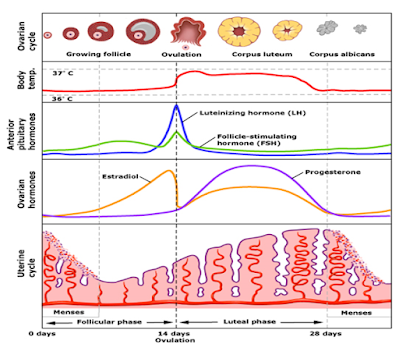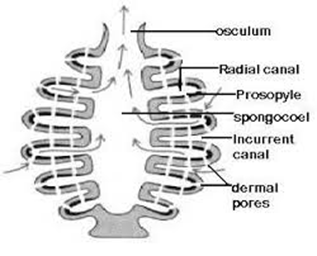4 Phases Of Menstrual Cycle & Ovulation In Females
Menstruation cycle
Every month, females undergo a natural reproductive cycle.
Duration - Generally, the duration of this cycle is ideally 28 days, but in some cases, its duration extends from 28 to 32.
Phases - This cycle is completed in four phases -
- Menstrual Phase
- Pre-Ovulatory Phase
- Ovulatory Phase
- Post-Ovulatory Phase
- Menstrual Phases - During days 1-5, a low level of female sex hormone in the body causes the endometrium to disintegrate and its blood vessels to rupture. On day one of the cycle, a flow of blood and tissues, known as the menses, passes out of the vagina during menstruation, also called the menstrual period.
📘 Need Handwritten Notes or Custom Assignments on ovulation or Any Biology Topic?
Struggling to understand tough biology topics like the menstrual cycle, types of eggs, or pollination? We offer clear, affordable, and ready-to-use handwritten notes and student-friendly assignments.
📩 Mail Us for Notes - Pre-Ovulatory Phase - After about four to five days, the next phase begins, known as the follicular phase of the ovary. During this phase, the hypothalamus releases increasing amounts of GnRH (Gonadotropin-releasing hormone), which stimulates the anterior pituitary gland to secrete FSH (Follicle Stimulating Hormone). FSH promotes the growth and development of ovarian follicles, one of which matures into the Graafian follicle. As this follicle matures, the theca interna layer also begins to develop. The growing follicle starts secreting estrogen, a hormone that plays a key role in the proliferation (thickening) of the endometrial lining of the uterus, preparing it for potential implantation.
- Ovulatory Phase - The estrogen level continues to rise and reaches its peak by the end of the 10th day of the menstrual cycle. At this point, the high estrogen concentration sends a negative feedback signal to the anterior pituitary, causing it to reduce the secretion of Follicle-Stimulating Hormone (FSH). As a result, FSH levels begin to decline, while Luteinizing Hormone (LH) levels start to rise. This rapid increase in LH levels is called the LH surge. The LH surge triggers the rupture of the Graafian follicle, leading to the release of a mature ovum — a process known as ovulation, which typically occurs around the 14th day of the menstrual cycle.
- Post Ovulatory Phase - After the release of the ovum (secondary oocyte), the Graafian follicle undergoes degeneration and transforms into a new structure called the corpus luteum. This structure contains a yellowish fluid due to the presence of lutein pigment.
If pregnancy does not occur, the corpus luteum begins to degenerate around the 14th day of the menstrual cycle. After degeneration, it is converted into a white scar-like structure called the corpus albicans, which contains a whitish substance.
The formation and function of the corpus luteum are stimulated by the luteinizing hormone (LH). The corpus luteum secretes two important hormones: progesterone and estrogen. These hormones prepare the endometrium (inner lining of the uterus) for the implantation of the embryo by making it thick, vascular, and glandular.
Progesterone plays a crucial role by inhibiting uterine contractions, thus helping maintain a suitable environment for pregnancy. If fertilization and implantation occur, the corpus luteum is maintained and continues to secrete progesterone.
For this reason, progesterone is often called the "pregnancy hormone" because it supports the early stages of pregnancy.
Menopause -Menopause is a natural stage in a woman's life when the ovarian and uterine cycles permanently stop. It typically occurs between the ages of 45 and 55. During this phase, the ovaries gradually stop producing the hormones estrogen and progesterone. At the onset of menopause, menstrual cycles may become irregular, but as long as menstruation continues, there is still a chance of conception. Therefore, a woman is considered to have officially reached menopause only after she has not had a menstrual period for 12 consecutive months.







This is really great and informative post can not stop myself sharing it.
ReplyDeletethank you Riley
DeleteThis comment has been removed by a blog administrator.
ReplyDelete